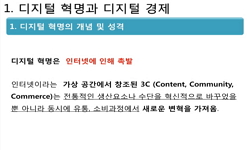So far the research has been the preference of either labor or leisure and the contribution of leisure on labor. This paper, however, aims to reveal the effect of different work environments on leisure activities. First the definitions of mental work...
http://chineseinput.net/에서 pinyin(병음)방식으로 중국어를 변환할 수 있습니다.
변환된 중국어를 복사하여 사용하시면 됩니다.
- 中文 을 입력하시려면 zhongwen을 입력하시고 space를누르시면됩니다.
- 北京 을 입력하시려면 beijing을 입력하시고 space를 누르시면 됩니다.
肉體勤勞者 및 精神勤勞者의 餘暇利用 實態에 관한 比較硏究 = (A) Study on the comparison of mental and physical workers' leisure use
한글로보기https://www.riss.kr/link?id=T5006974
- 저자
-
발행사항
부산 : 東亞大學校 經營大學院, 1995
-
학위논문사항
학위논문(석사) -- 동아대학교 경영대학원 , 관광경영전공 , 1995. 8
-
발행연도
1995
-
작성언어
한국어
- 주제어
-
KDC
326.39 판사항(4)
-
발행국(도시)
부산
-
형태사항
v, 69p. ; 26cm
-
일반주기명
참고문헌: p. 55-57
- 소장기관
-
0
상세조회 -
0
다운로드
부가정보
다국어 초록 (Multilingual Abstract)
So far the research has been the preference of either labor or leisure and the contribution of leisure on labor. This paper, however, aims to reveal the effect of different work environments on leisure activities.
First the definitions of mental workers and Physical workers were sought, their background in terms of a labor history was examined, and the results of previous research concerned were discussed in detail. With this theoretical warming-up, some actual research on laborers' leisure activities was analyzed.
Then, four hypotheses were decided : leisure necessity, leisure dissatisfaction, leisure planning, and the source of leisure information. All 29 items of questions were composed in three pares leisure consciousness(13), leisure activities(9), and demographics(7). 200 workers each were chosen and the method of random self-response was taken. self-response was taken.
According to the analysis, both groups thought high of leisure and labor, felt leisure necessity, had leisure 13 get rid of fatigue and unhappiness, and were satisfied in work and family life more than leisure activities and community life.
Though lots of answerers were satisfactory with their own leisure patterns, the lack of time was the main factor for the unsatisfied.
Most workers in the two groups were half planning for their leisure activities, mainly considering comfort and composure, The highest source of leisure information was word of Mouth and friends constituted main partners.
Watching and appreciation, especially movies and plays, formed their major leisure pattern. Among other leisure activities were taking a walk (in the section of sightseeing), joining in group and alumni gatherings (social activity), playing bowling (sports), and musical performance or singing (hobbies).
As a result 400 workers in the two groups showed no difference in leisure planning but some differences in three other parts of leiusre necessity, leisure dissatisfaction, and the source of leisure information.
The generalization of these results is rather difficult because most answerers were in their 20s or 30s and because the peculiar occupational differences between mental and physical workers were not carefully examined. Further research might have to get over these limits.
목차 (Table of Contents)
- 목차 = ⅰ
- Ⅰ. 서론 = 1
- 1. 연구의 목적 = 1
- 2. 연구의 방법과 범위 = 2
- Ⅱ. 근로자와 여가와의 관계에 관한 이론적 배경 = 4
- 목차 = ⅰ
- Ⅰ. 서론 = 1
- 1. 연구의 목적 = 1
- 2. 연구의 방법과 범위 = 2
- Ⅱ. 근로자와 여가와의 관계에 관한 이론적 배경 = 4
- 1. 육체근로자 및 정신근로자의 정의 = 4
- 2. 육체근로자 및 정신근로자의 발생배경 = 9
- 3. 노동과 여가와의 관계 = 13
- 4. 여가활동유형 = 21
- Ⅲ. 조사설계 = 26
- 1. 가설의 설정 = 26
- 2. 설문지 구성 = 26
- 3. 조사대상 = 27
- 4. 조사 및 분석 방법 = 27
- Ⅳ. 분석결과 및 해석 = 28
- 1. 표본의 인구 통계적 특성 = 28
- 2. 육체근로자와 정신근로자의 여가의 일반적 특성 분석 = 31
- 3. 육체근로자와 정신근로자의 주요 여가 활동 분석 = 42
- 4. 가설의 검증 = 47
- 5. 분석결과에 따른 시사점 = 50
- Ⅴ. 결론 = 53
- 1. 연구의 요약 = 53
- 2. 연구의 한계점 = 54
- 참고문헌 = 55
- SUMMARY = 58
- 여가활동에 관한 설문지 = 60








